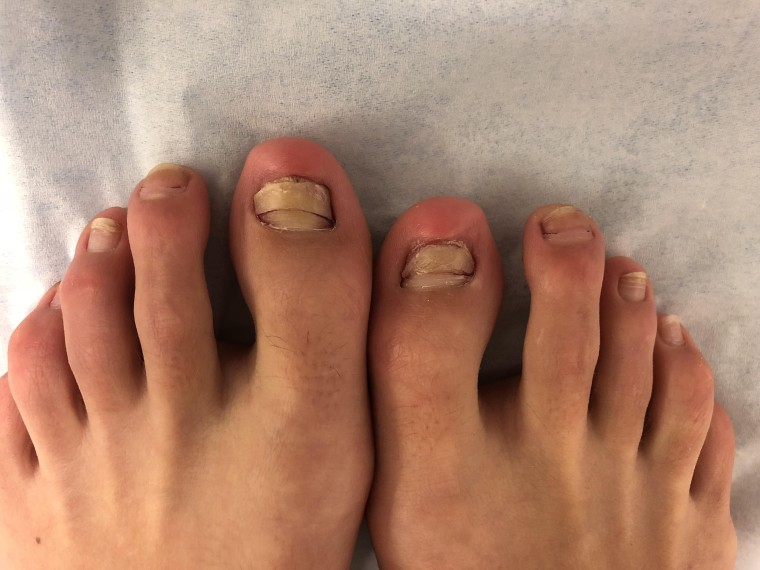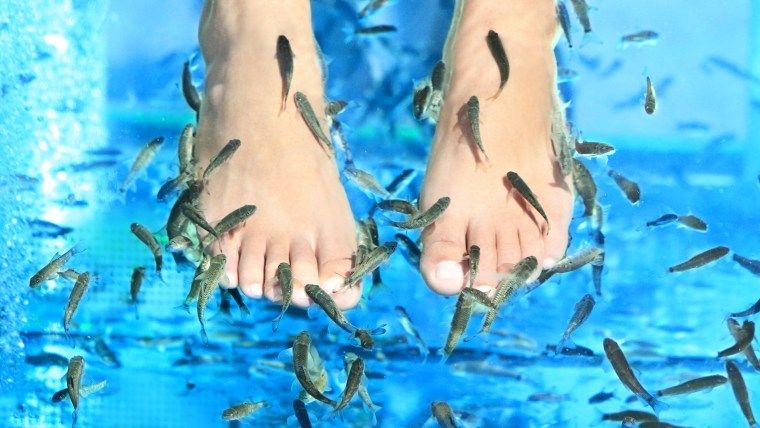Fish pedicures may be trendy, but they could lead to some unexpected complications, a dermatologist reported Tuesday.
A woman showed up with split toenails — a condition known medically as onychomadesis.
The best possible explanation: the woman’s fish pedicure.
“We are not entirely sure of the mechanism of action but most likely it’s from the trauma of the fish on the nail matrix, which is the nail growth center, that probably caused this condition,” Dr. Shari Lipner of Weill Cornell Medicine in New York said by telephone.
It’s one more reason not to get fish pedicures, said Lipner. “I recommend that my patients would never, because if you really weigh all the risks and benefits of doing this, the risks really outweigh of the benefits.”
She’s keeping an eye on the 20-year-old patient’s toes but said it can take a year or longer for a toenail to grow back.
The nail matrix is the slightly thicker ridge of skin that sits right next to the cuticle. When it’s damaged, onychomadesis can result.

“With onychomadesis, there is a complete halt in nail plate production,” Lipner wrote in a letter to the Journal of the American Medical Association’s JAMA Dermatology.
“Onychomadesis is a relatively common physical examination finding and has been associated with major medical illnesses, infections, systemic disease, autoimmune disease, medications, hereditary conditions, and idiopathic (unknown) causes. To my knowledge, this is the first case of onychomadesis associated with a fish pedicure.”
Fish pedicures are banned in several U.S. states and for good reason, Lipner said. It’s almost impossible to sanitize living fish or their water.
And the fish used for fish pedicures, a species called Garra rufa or “Doctor fish”, can carry some pretty nasty infections. In 2012, Britain’s Fish Health Inspectorate seized imported Garra rufa at London’s Heathrow airport and found they were carrying germs including Group B Streptococci and Vibrio vulnificus, which can cause flesh-destroying infections.
Although the fish used for these pedicures can nibble away dead skin, they have no teeth. Nonetheless, they can and do transmit infection.
“If you have any problems with the skin on your feet or your nails, seeing a board-certified dermatologist is the best way to resolve this rather than seeing the fish doctor,” Lipner said.
